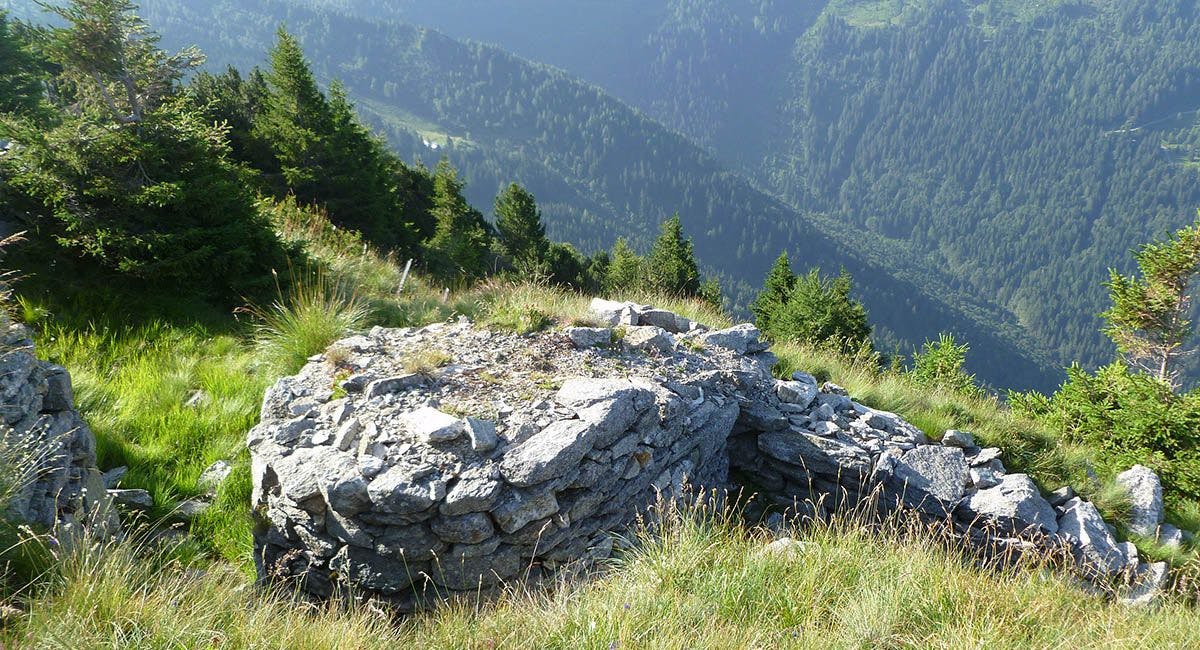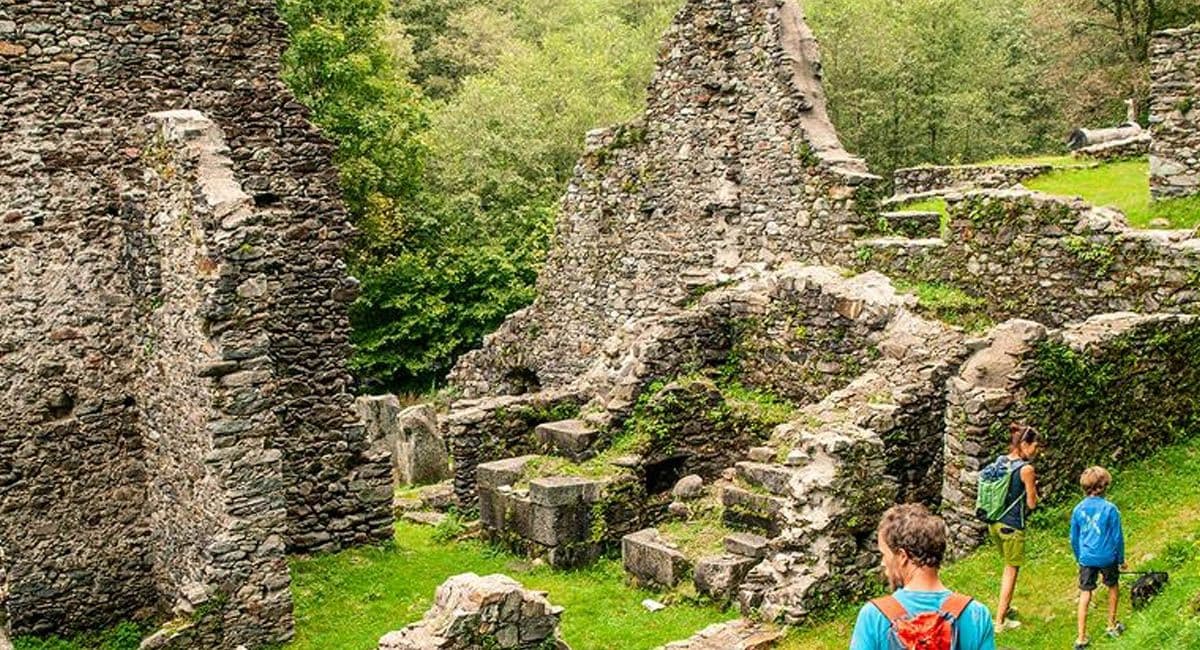
The Forts of War
The valley as a military bulwark
The San Jorio sector, firmly connected to the Gesero sector, was placed to defend the border with Italy, protecting the so-called "Fortress Bellinzona."
The importance of this area is demonstrated by the construction between 1909 and 1912 of several shelters and a carriage road up from Arbedo. The work was built by the Federal Military Department, which followed up on the request of the Arbedo Patriziato to decrease the road's slope from 15 percent to 10 percent to encourage transhumance to the Alpe di Gesero. With this expedient, the section was lengthened by about 2 km. The Patriziato assumed the additional costs of fr. 18,000.- (10%). In the summer of 1911 the Arbedo-Stabio Pto. 741 was finished, but in 1928 the great landslide at Motto di Arbino interrupted the road: alternative routes had to be sought to reach the Biscia area. The military road from Roveredo (GR) up to Laura was then improved, extending it to Gesero.
The "Iron Route," an integral cross-border route, is a thematic itinerary that retraces the historic routes that connected, via the Motto della Tappa or Cima Verta (2078 m a.s.l.), the Morobbia Valley with the Lombardy Cavargna and Albano valleys and between them the mining and iron and steel sites. Important vestiges of ancient iron and steel activities are preserved in these places: settlements, charcoal pits, post stations, and routes connecting areas of extraction (quarries, mines), processing (blast furnaces, forges, water hammers), and product sales.
During World War I, between 1915 and 1917, many field works were built on the ridge from Biscia in the direction of Motto della Croce. Ground consolidation works were carried out and trenches, shelters and weapon positions for 12-, 8.4- and 7.5-cm cannons, machine guns and mine launchers were formed.
With the general mobilization in 1939, the sector regained military importance and was further fortified to protect the Bellinzona area and in particular the City of Bellinzona, which is about 11 km away in a straight line. New strongholds were built and some trenches from the First World War between the Biscia and Sass Guidà were adapted and reused.
Despite the degradation of time, many of these works are still recognizable today. The proposed itinerary allows us to discover in particular the posts, still in good condition, of the Biscia and Sass Guidà.




